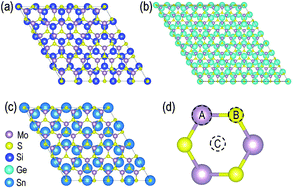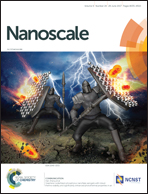MoS2 heterostructure with tunable phase stability: strain induced interlayer covalent bond formation†
Abstract
The structural phase transition in MoS2 promises applications in novel nanoelectronic devices. Elastic strain engineering can not only serve as a potential route for phase transition engineering, but also reveal potential ferroelastic behavior of MoS2 nanostructures. However, the elastic strain required for phase transition in monolayer MoS2 is far beyond its elastic limit, thus inhibiting the experimental realization. In this study, employing density functional theory calculations, we uncover that by forming heterostructure with buckled 2D materials, such as silicene, germanene and stanene, the critical phase transition strain required in monolayer MoS2 can be drastically reduced. Particularly when MoS2 forms sandwiched structures with silicene or stanene, the uniaxial and biaxial critical strain can be reduced to ∼0.06 and ∼0.03, respectively, which is well below the experimental elastic limit. This theoretical study not only proposes an experimental achievable strategy for flexible phase transition design in MoS2 nanostructure, but also identifies those MoS2 heterostructures as 2D candidates for potential shape memory devices and pseudoelasticity applications.



 Please wait while we load your content...
Please wait while we load your content...